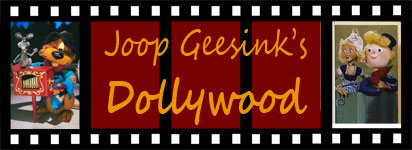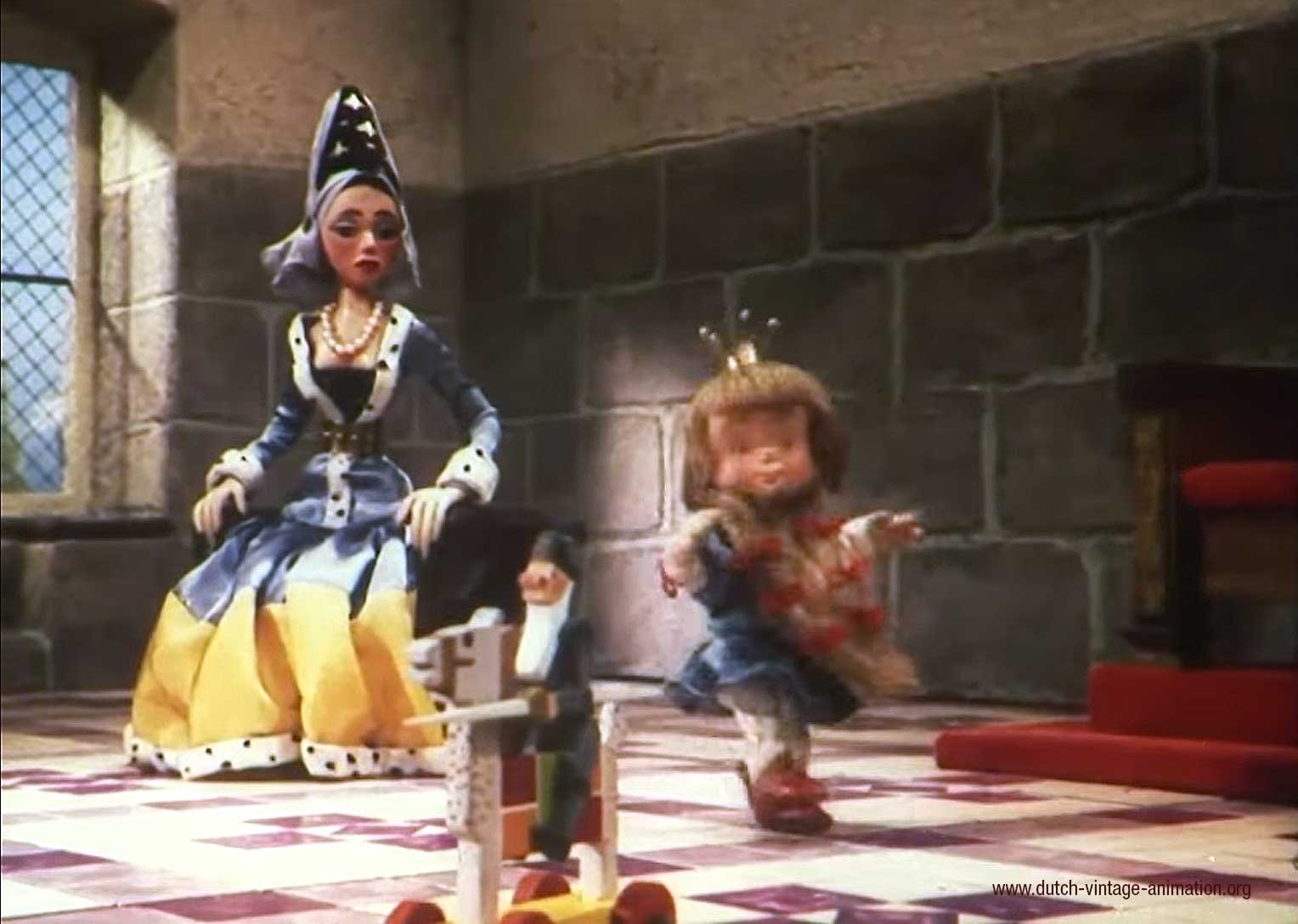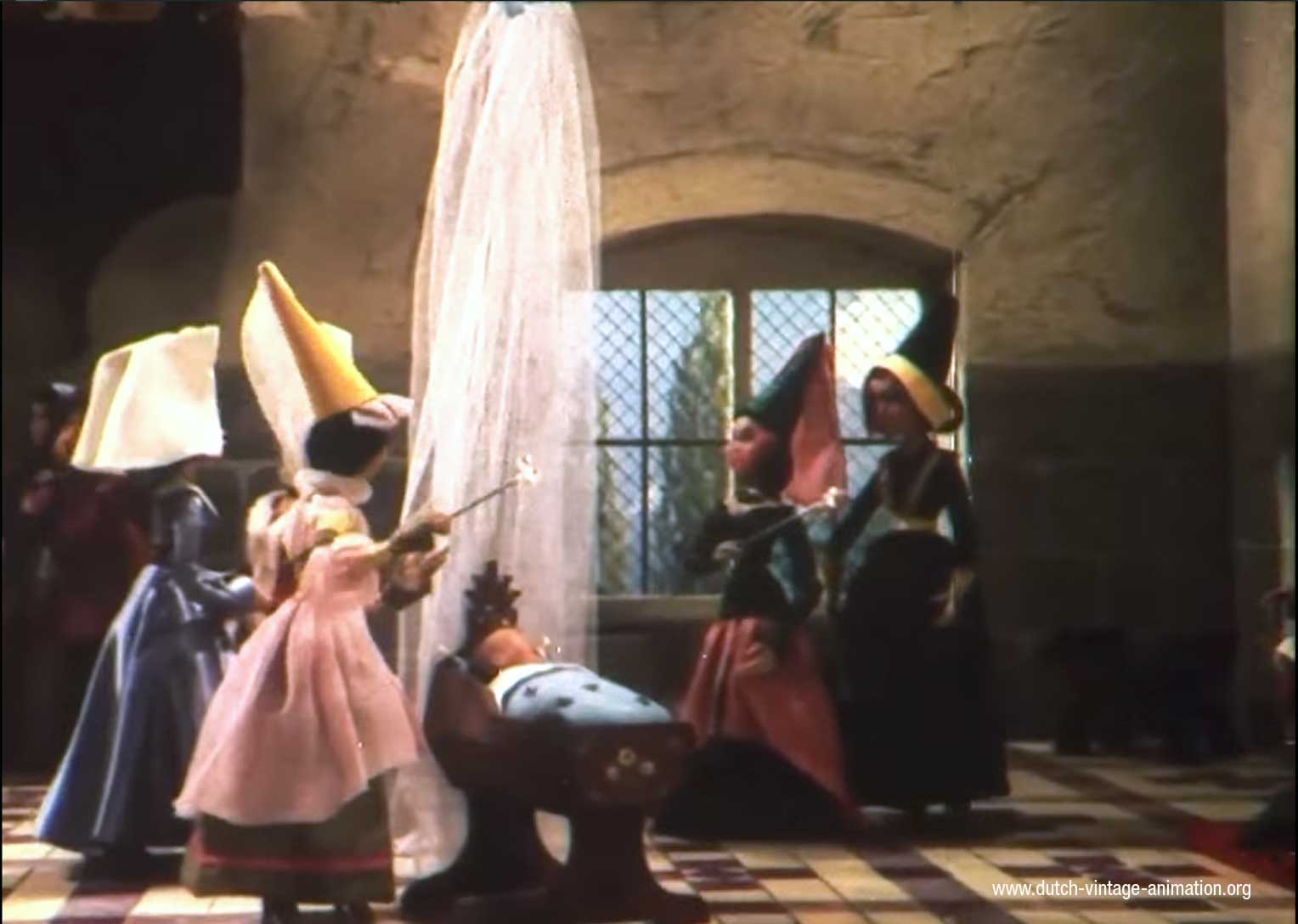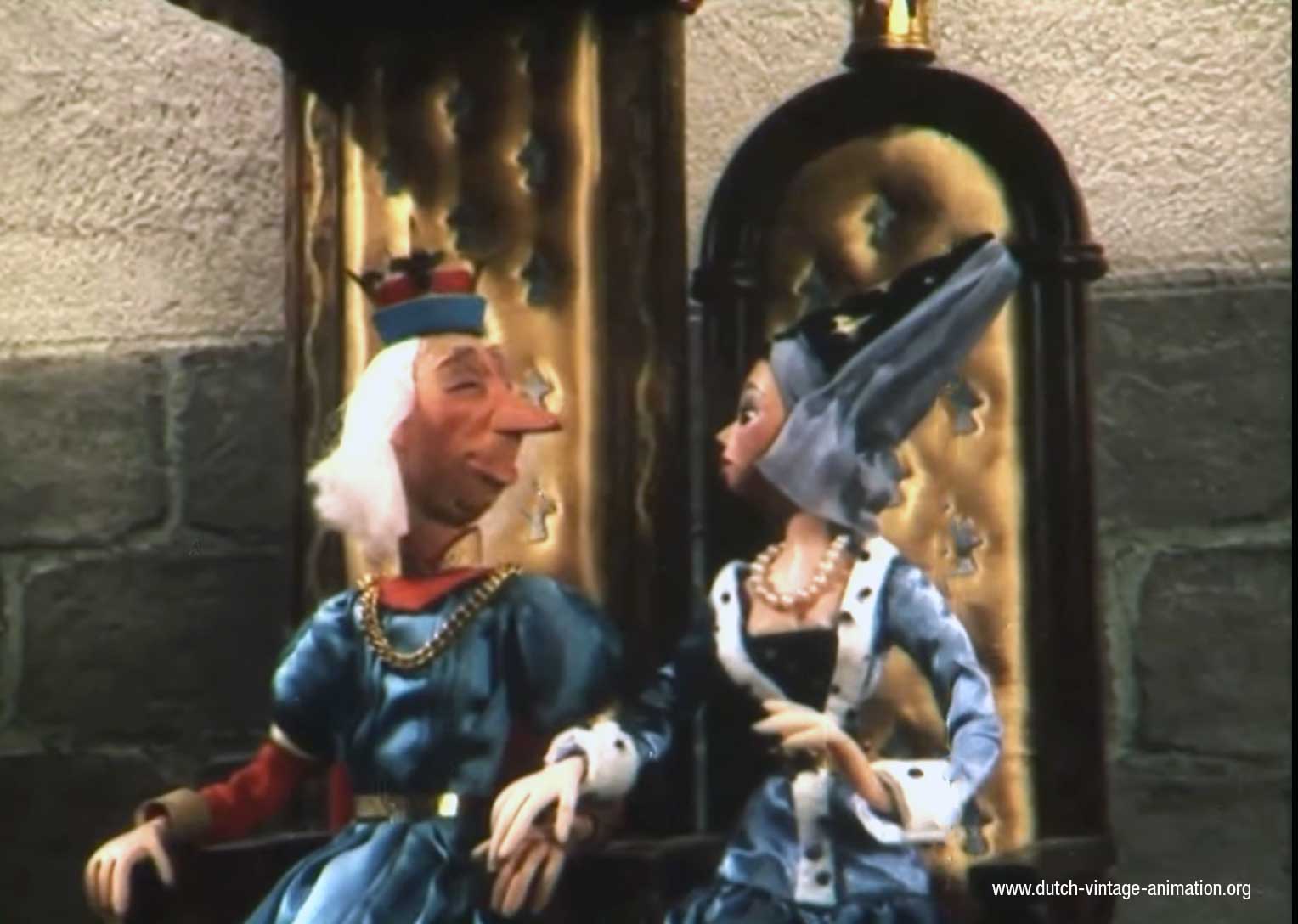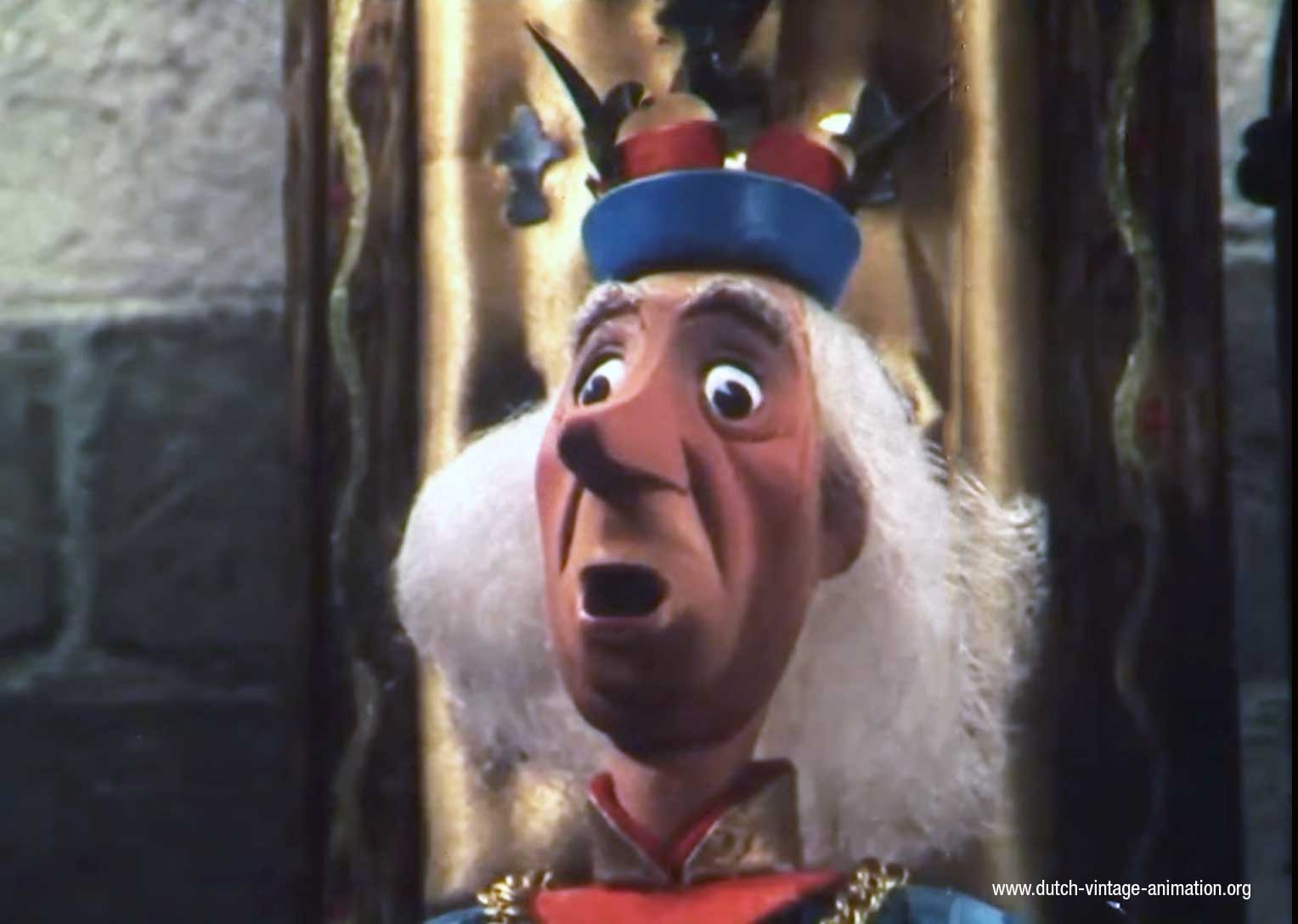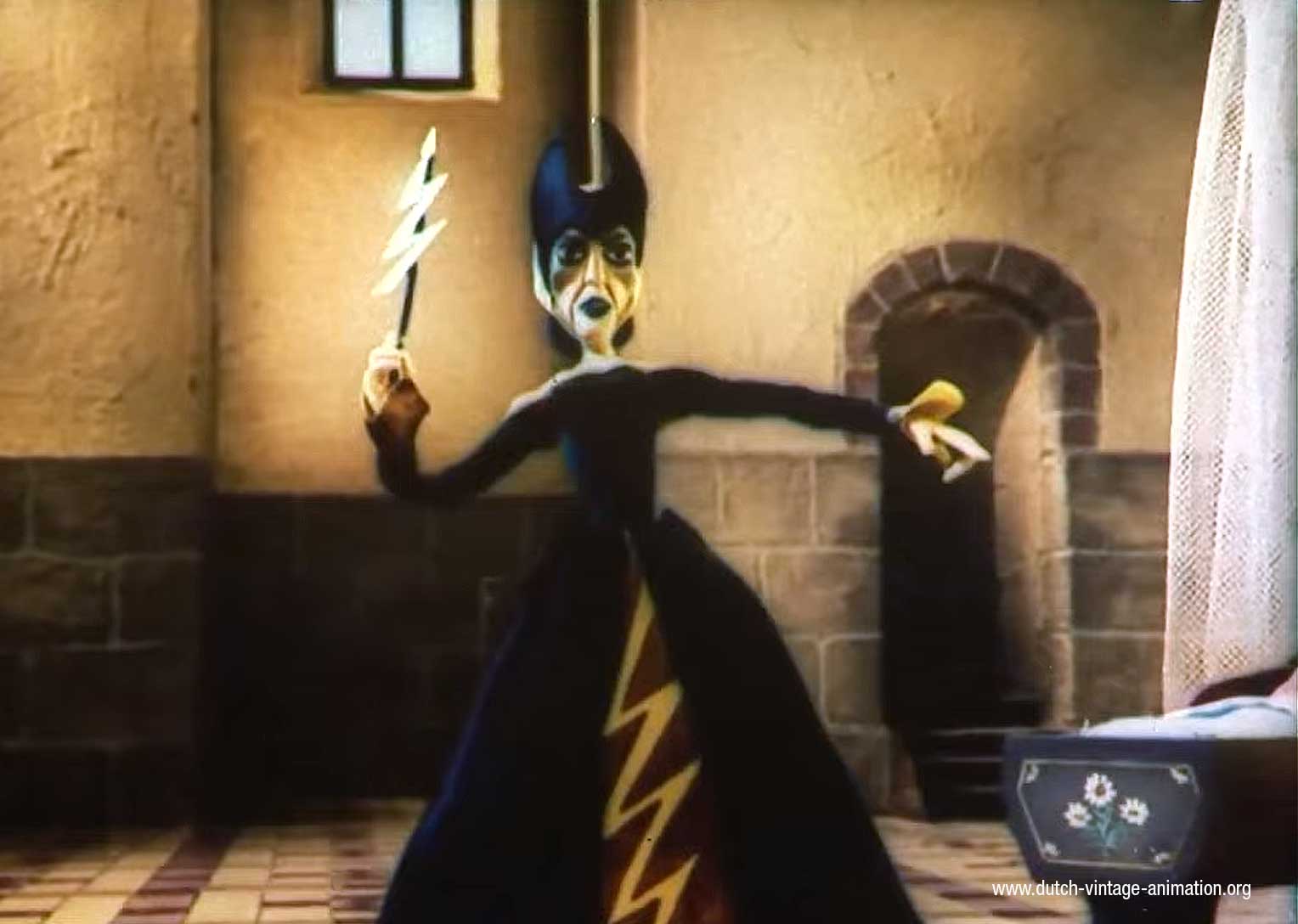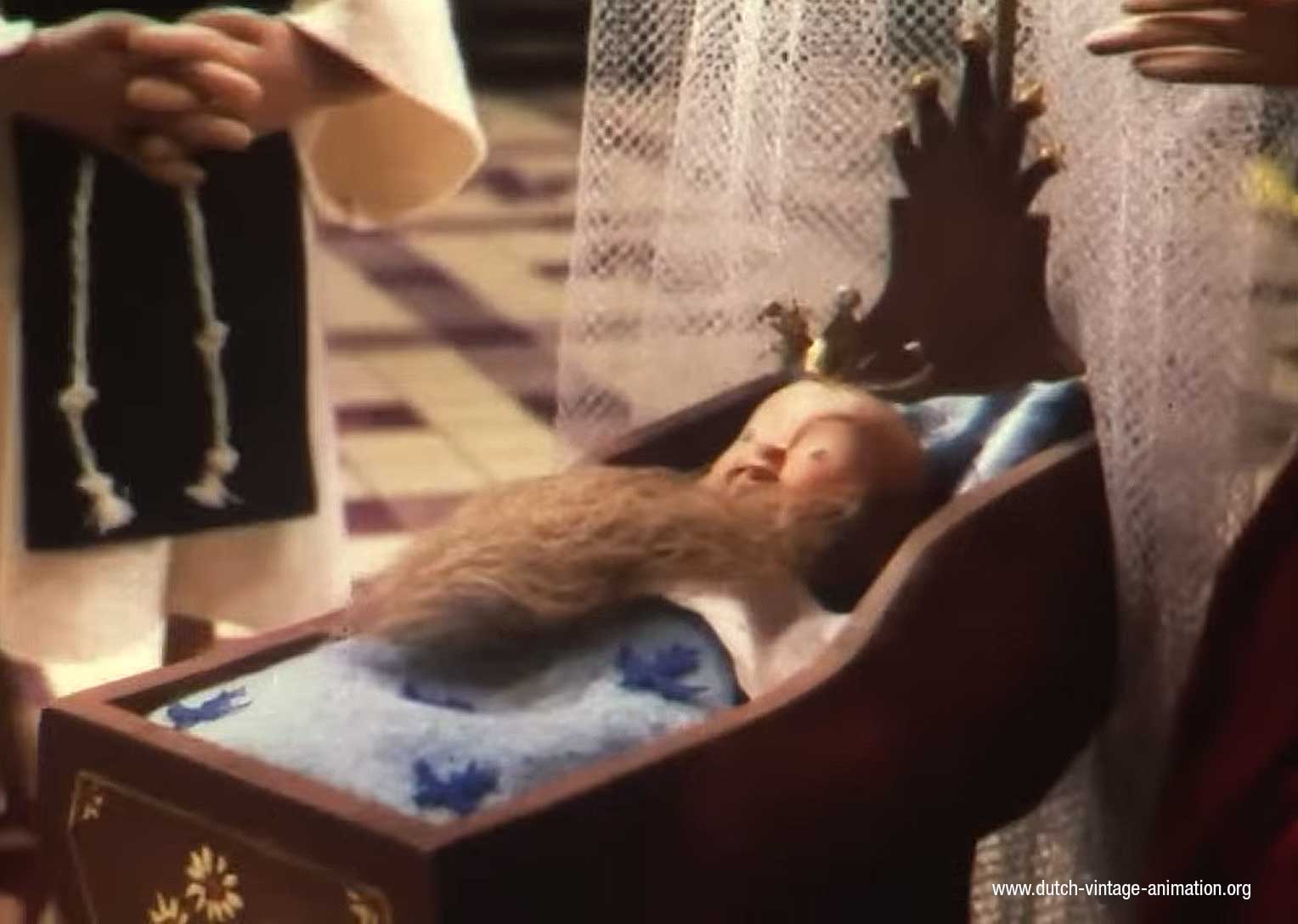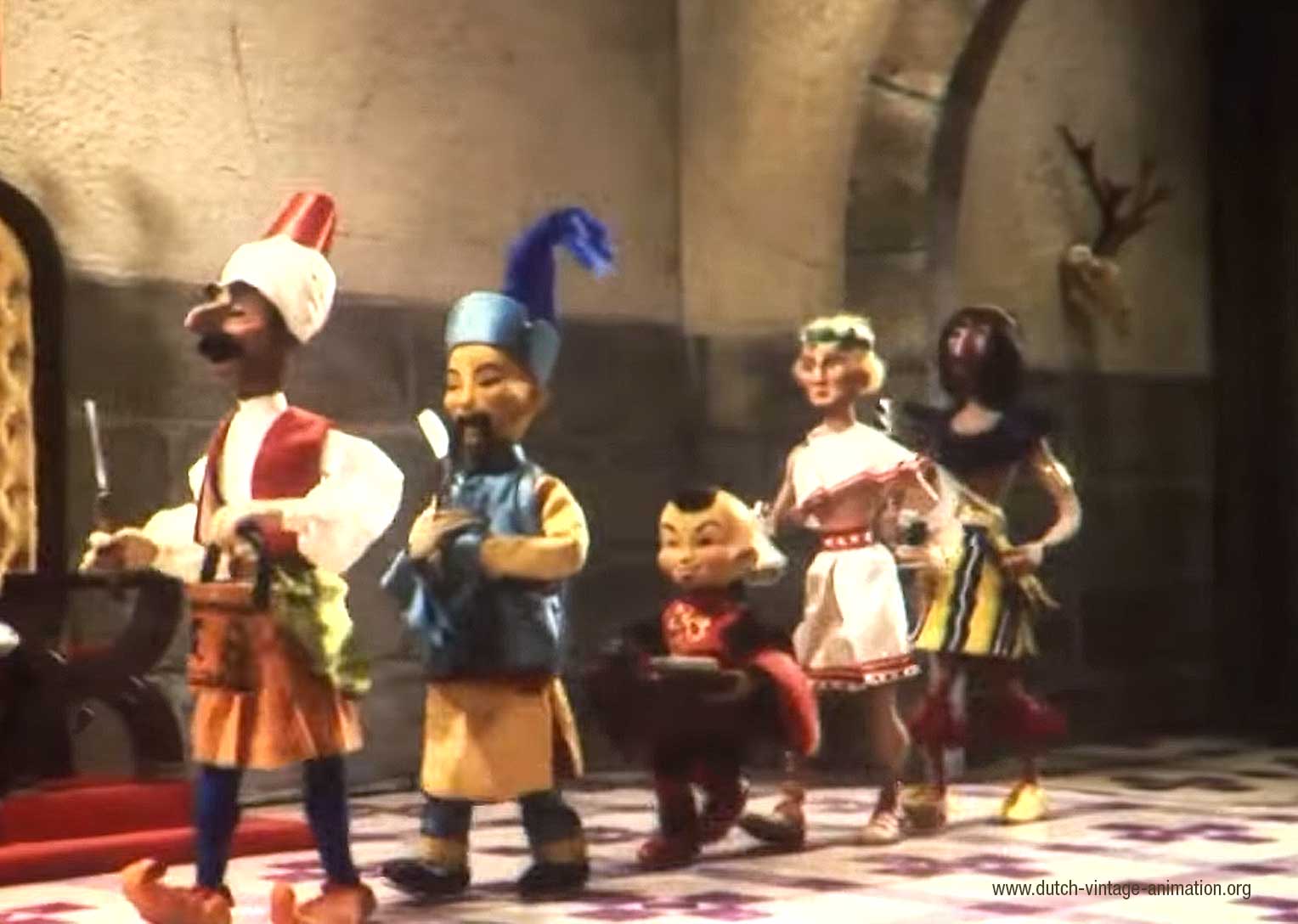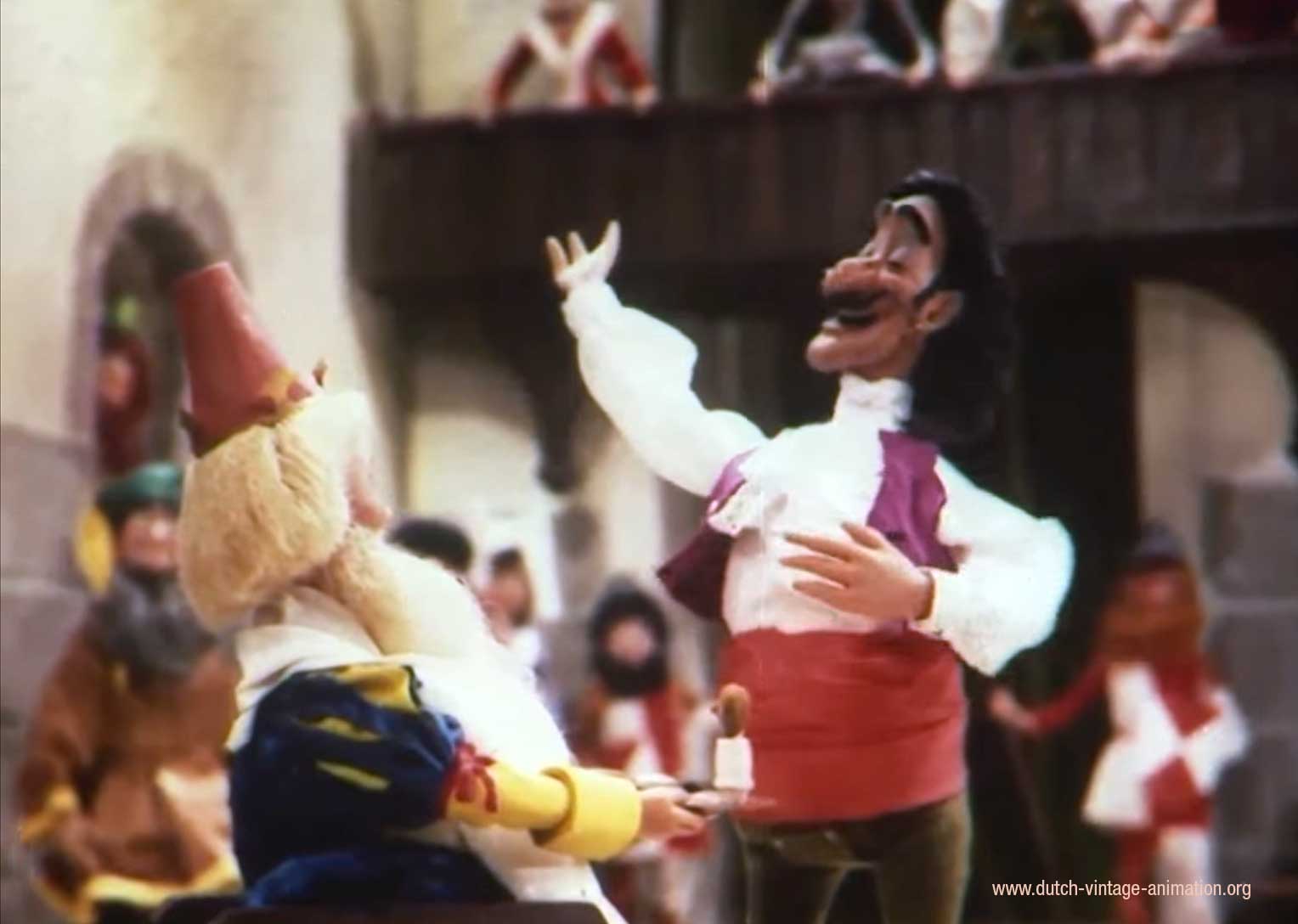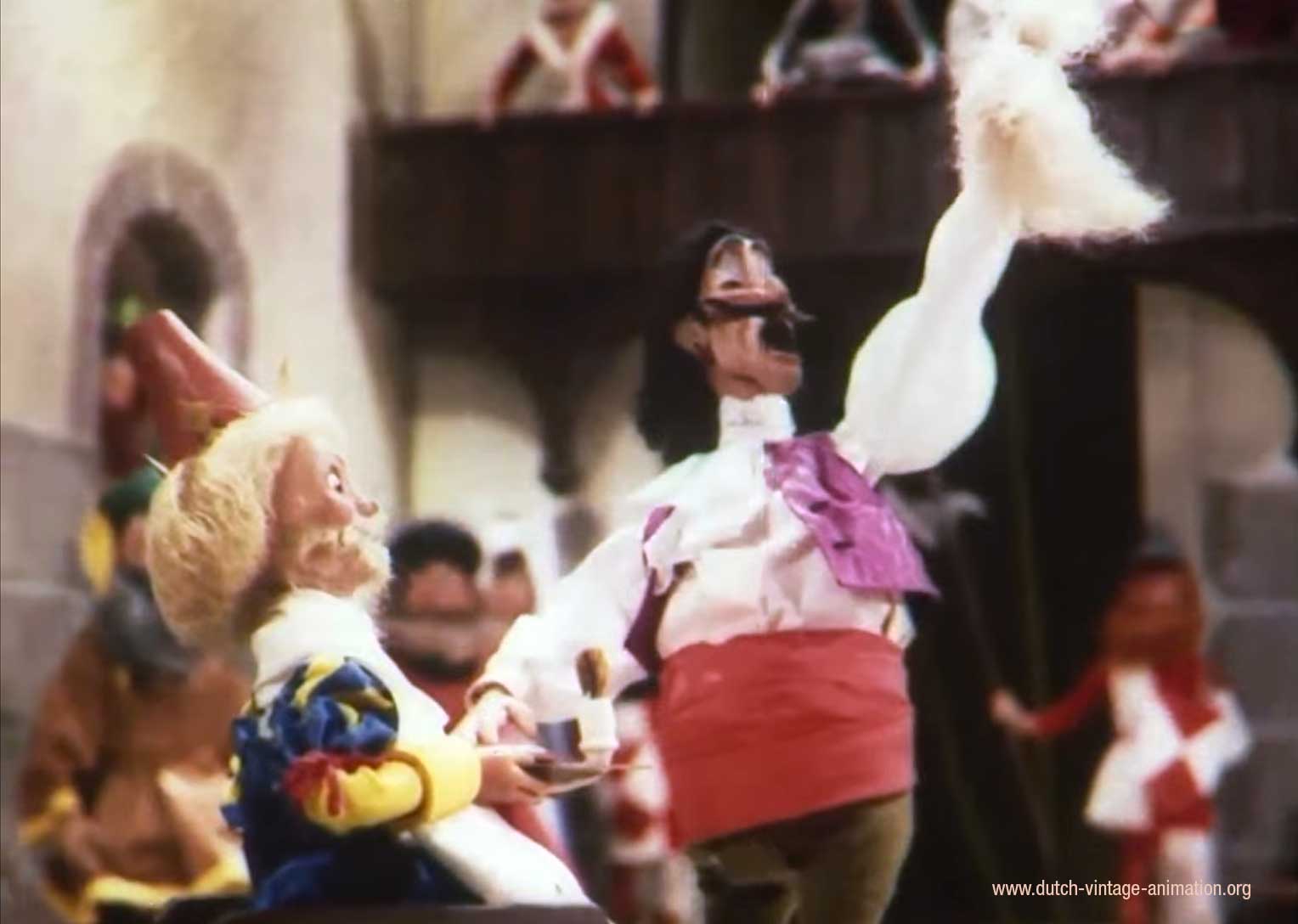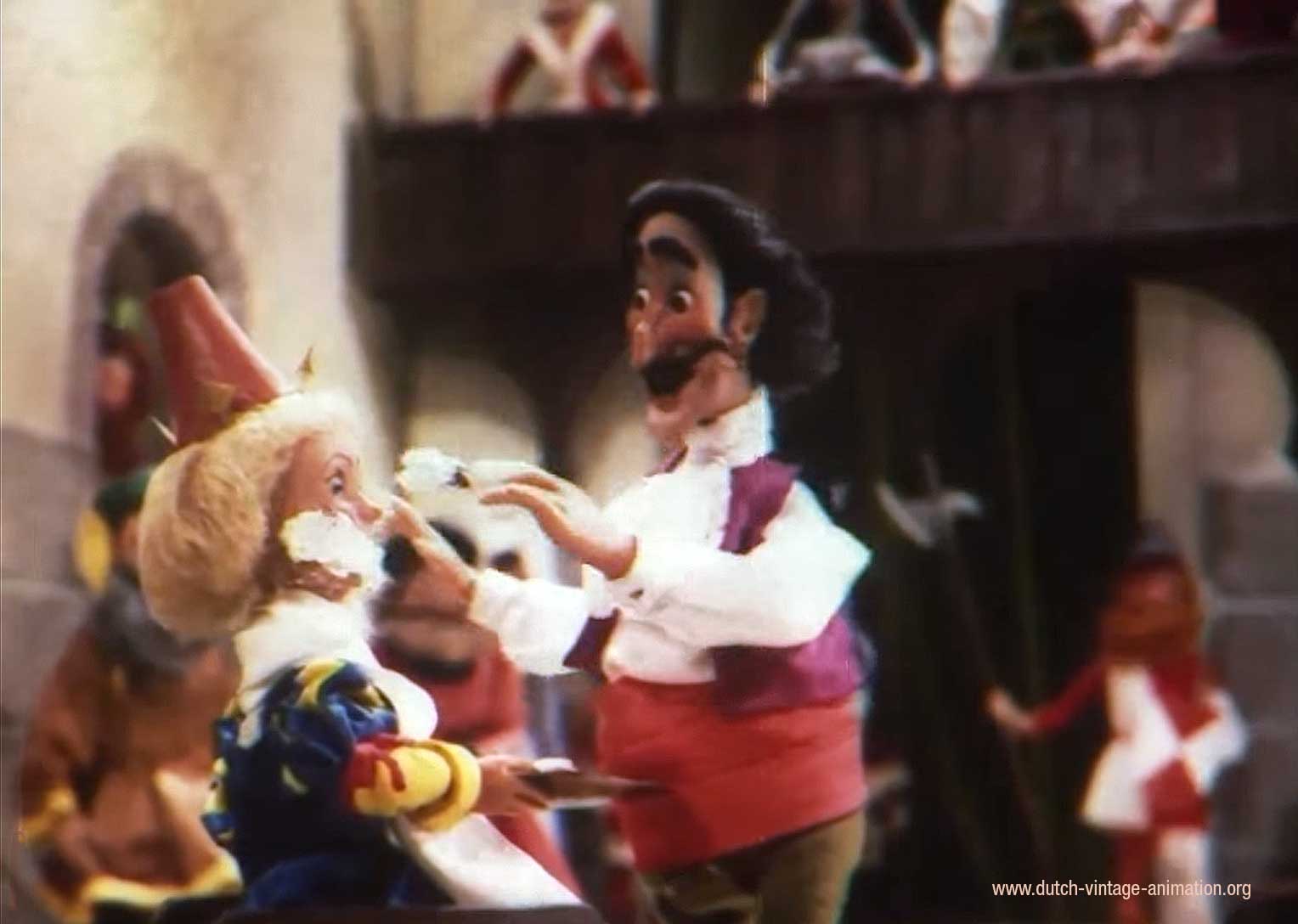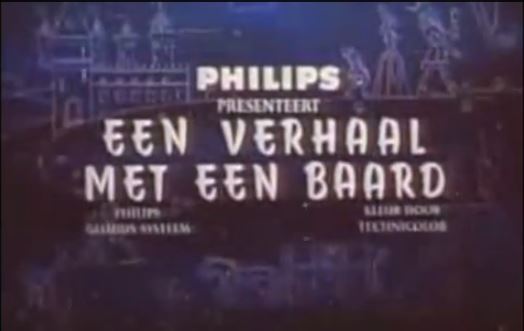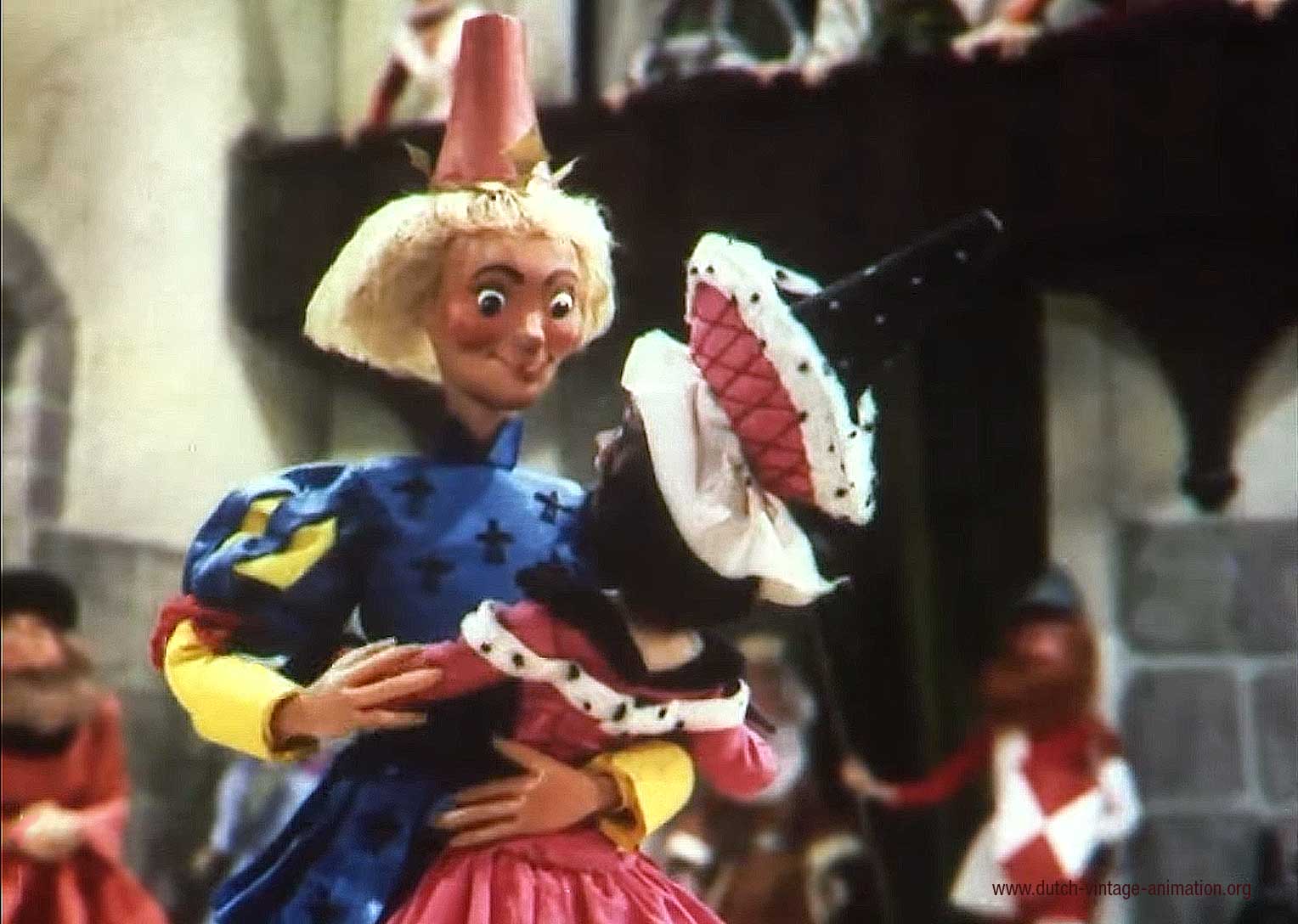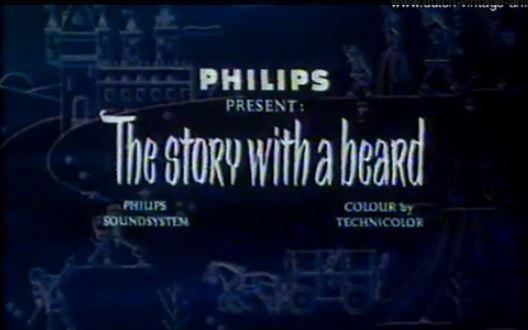
An entertaining commercial film for Philips Philishave electric shavers. With a nod to a familiar fairytale, a newly born prince gets cursed with a perpetual beard. The Philishave electric razor s(h)aves the day, making it possible for the prince to find true love.

Trivia
This expertly made film boasts just about all available puppet film techniques of that era. Of particular interest is the moment when the Barber of Seville enters the story – singing, of course. This 1-minute sequence shows an astonishing range of facial expressions for this musical character. This was made possible by creating independently replaceable shapes for both mouth and eyes. The seam was cleverly hidden by a swooping moustache, which was also animated.
Big Three
Computers and digital postproduction were still a long way off in 1958, so Dollywood’s animation wizards had to solve visual challenges with creative mechanical and optical means in front of the cameras.
Joop Geesink brought together a trio of gifted men whose skills and creative talents blended exceptionally well: Creative director Henk Kabos, puppet maker Harry Tolsma and animator Cor Icke. Together, these three produced a string of exceptional films. Looking back, they can be thought of as Dollywood’s “Big Three”.
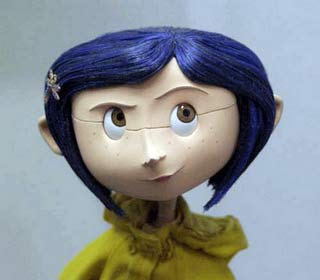
Coraline’s face with a separation seam over eyes and nose. . Coraline (2009)
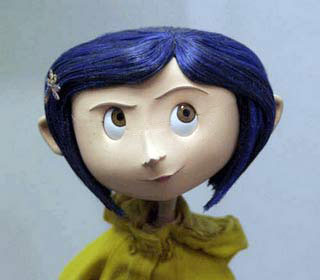
Coraline’s face with a separation seam over eyes and nose (erased digitally in post production). oraline (2009)
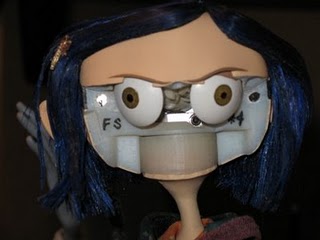
production still of Coraline with lower part of face removed.. Coraline (2009)
Paulus the Wood Gnome
This film was released in a number of languages; for each version a native speaker was sought who had to be expressive enough to carry this story and perform the different voices. For the original Dutch version Jean Dulieu was approached, a versatile radio personality who had a popular radio show and (later TV show) featuring the then well-known character Paulus the Wood Gnome. He happily took on the challenge of being the storyteller and the different characters – with the exception of the singing barber who was performed by an unnamed professional singer. Older Dutch visitors of this site may recognize Jean Dulieu’s familiar radio and TV voices of that time.
This page features both the Dutch and the English version of this film, side by side. Have a listen to the performances of the different voice talents. Spanish, German and French dubs were also produced.
Plate glass
As was conventional in those days, title cards were shot directly in front of the camera. With typesetting machines and laser printers still to be invented, a graphics artist would first hand-paint the lettering onto large sheets of glass, which were placed on top of a hand-painted background and carefully lit in order to avoid glares and reflections. A meticulous and time-consuming job…
Cor Icke’s touch
Animator Cor Icke loved to add fun, personal touches to his animation. For instance, the shot of the prince as a toddler playing with his toy horse was extremely difficult to animate because of the puppet’s short, stubby legs. Fortunately Cor Icke happened to be a young dad himself at that time, and studying the way his own child moved around he noticed the toddler's loose "wobbly” mannerisms, making it a bit easier (and more characteristic) to animate the young prince.
Halfway through the film we see an old man carting his own beard around in a wheel barrow. Cor Icke had noticed that when street pavers had to pick up their wheel barrow filled with heavy bricks, they would often first spit into their hands for extra grip. So that’s what he made this puppet do, too.
To make the scene of the singing Barber of Seville more interesting, Cor Icke synchronized the barber's shaving actions perfectly with the accents in the music so they reinforced each other in a natural way.
The somewhat peculiar way the princess waves to the crowd at the end of the movie mimicked the way the beloved Dutch Queen-Mother of that time (Queen Wilhelmina) used to wave.
Joop Geesink appreciated Cor Icke's flourishes, and increasingly assigned him to more prestigeous films.
Credits
| Title: | The Story with a Beard | |
|---|---|---|
| Client: | Philips | |
| Productiejaar: | 1958 | |
| Length: | 10 minuten | |
| Directing and design: | Henk Kabos | |
| Music: | Dolf van de Linden | |
| Animation: | Cor Icke | |
| Camera: | Fred van de Boezem | |
| puppets: | Harry Tolsma | |
| Puppet clothing: | Lia Sten | |
| Format: | 35 mm, Technicolor |
